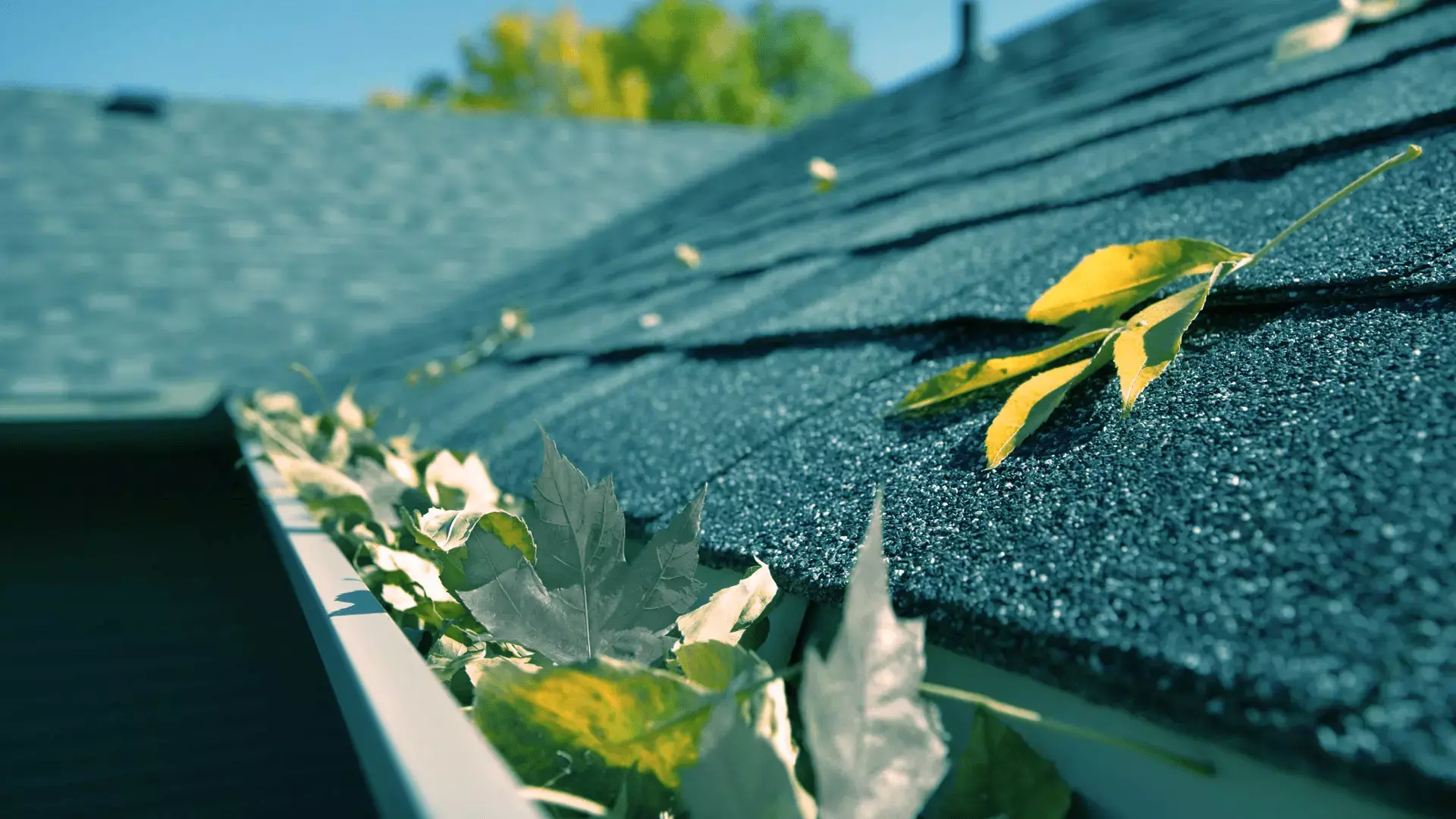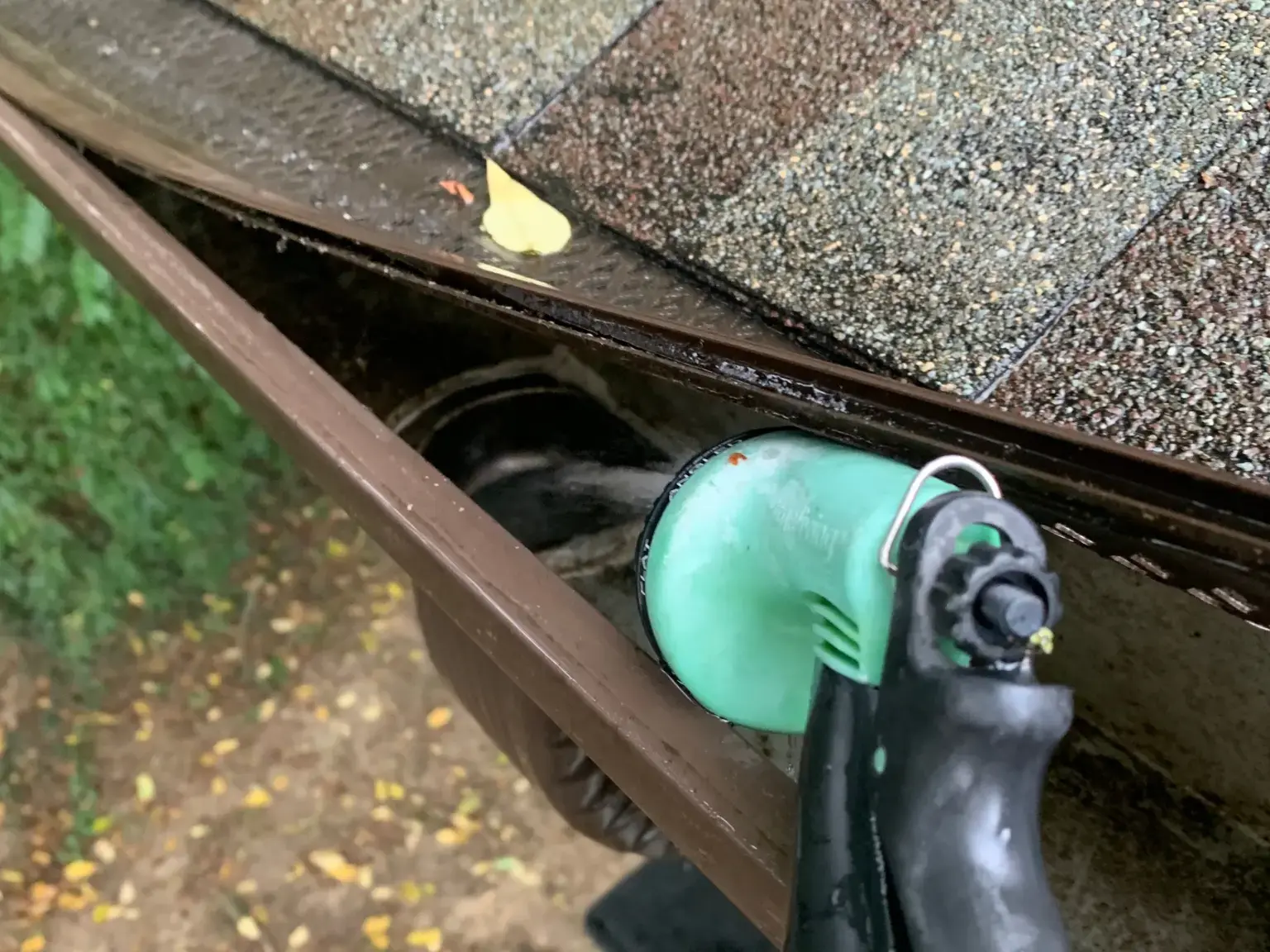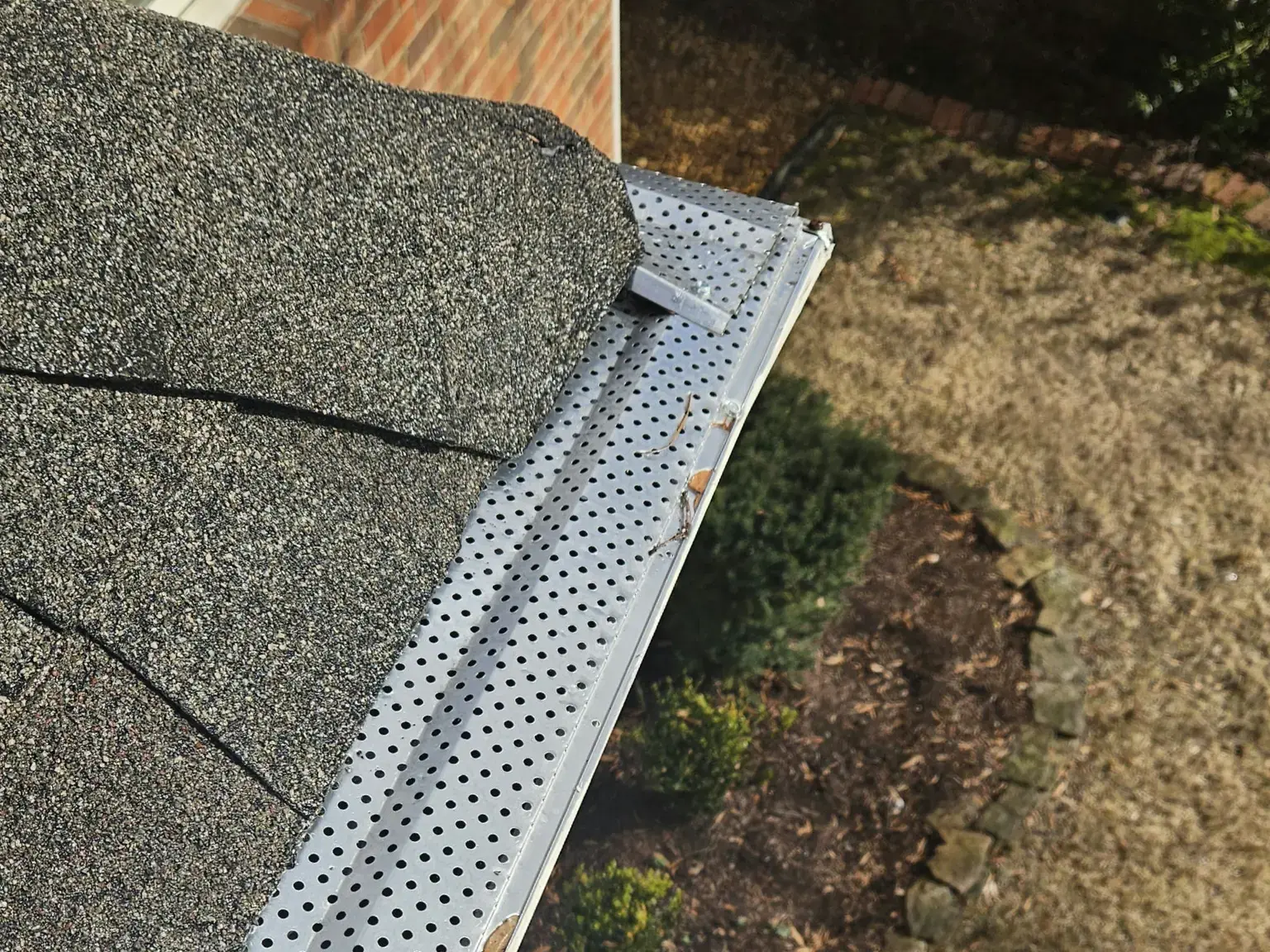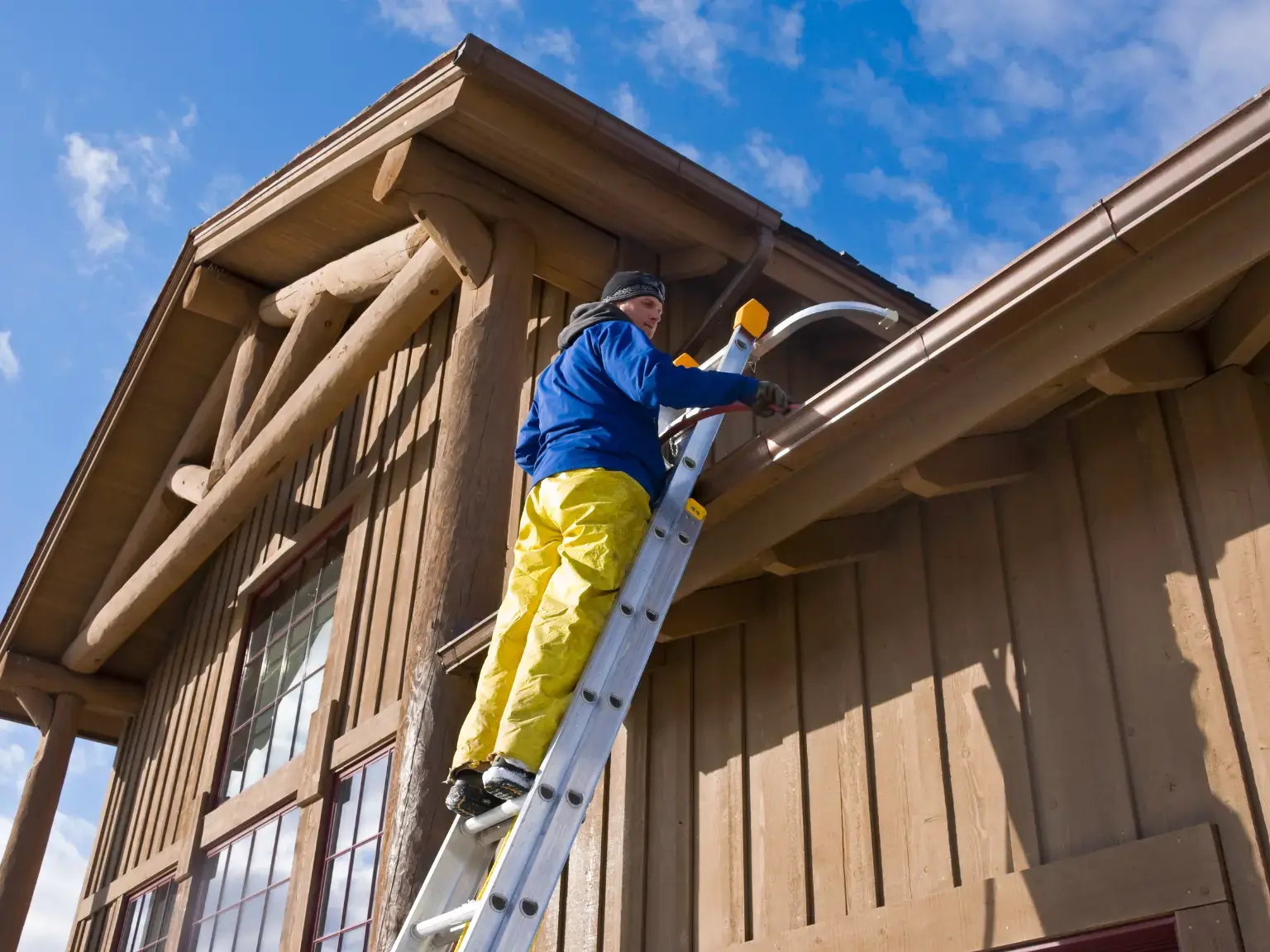The standard gutter size for residential homes is typically 5 inches for K-style gutters and 6 inches for half-round gutters. This sizing is crucial to efficiently manage rainwater runoff, protecting the home from water damage and maintaining its structural integrity. The choice between 5-inch and 6-inch gutters depends on the roof’s size and pitch, with larger or steeper roofs requiring the wider option to accommodate the increased flow of water.
Homeowners must consider their region’s typical rainfall intensity when selecting the appropriate gutter size. In areas prone to heavy downpours, a 6-inch gutter may be more suitable to prevent overflow, which can lead to foundation damage, basement flooding, and landscape erosion. Conversely, for homes in regions with less intense rain, a 5-inch gutter may suffice.
Enhancing gutter efficiency involves not just selecting the right size but also incorporating features like gutter guards to minimize debris buildup and downspout extensions to direct water away from the home’s foundation. Regular maintenance, including cleaning gutters at least twice a year and inspecting for any damages, ensures long-term functionality and protection.
In summary, the standard gutter sizes for residential homes—5 inches for K-style and 6 inches for half-round—are designed to meet various architectural and climatic needs. Homeowners should assess their specific requirements based on roof size, pitch, and local weather patterns to choose the most effective gutter size, supplemented by protective and maintenance strategies for optimal water management.
Understanding Gutter Sizes
Selecting the correct gutter size is essential for effective home maintenance, ensuring proper rainwater diversion away from the structure to protect against water damage. This section explores the various types of gutters commonly used in residential settings and the critical factors influencing the choice of the ideal gutter size.
Common Types of Gutters for Homes
Residential homes typically utilize two main styles of gutters: K-style and half-round.
K-Style Gutters: Characterized by their flat bottoms and backs, the front side of the gutter usually has a decorative shape, resembling crown molding. K-style gutters are popular due to their high capacity and resistance to bending or warping. They are available primarily in 5-inch and 6-inch widths.
Half-Round Gutters: These gutters are shaped like a tube cut in half and offer a traditional look that suits older, historic homes. Half-round gutters are known for their efficiency in water flow, reducing the likelihood of clogs and backups. Like K-style, they are commonly found in 5-inch and 6-inch widths.
Factors Determining the Ideal Gutter Size
Choosing the right gutter size for a residential home involves several considerations to ensure optimal performance:
Roof Size and Area: The larger the roof area, the more rainwater the gutters need to handle. A simple calculation based on the square footage of the drainage area helps determine the appropriate gutter size.
Pitch of the Roof: Steeper roofs collect water more quickly than flatter ones, requiring gutters with a higher capacity to prevent overflow during heavy rainfall.
Rainfall Intensity: Homes located in regions with high precipitation levels may need larger gutters to manage the increased water volume during storms.
Aesthetic Preference: While functionality is paramount, the gutter’s appearance on the home is also a significant consideration. Homeowners often choose a size and style that complements their home’s exterior design.
Understanding these factors helps homeowners and professionals make informed decisions when selecting gutters, ensuring they are both functional and aesthetically pleasing. Properly sized gutters contribute significantly to the home’s longevity by preventing water-related issues and enhancing curb appeal.
The Significance of Proper Gutter Sizing
Choosing the right gutter size is not merely a functional decision; it plays a vital role in both safeguarding the home’s structure and enhancing its overall aesthetics. This section delves into how appropriate gutter sizing can prevent water damage and contribute to the home’s visual appeal.
Preventing Water Damage
The primary purpose of gutters is to channel rainwater away from the home’s foundation, walls, and landscaping. When gutters are too small, they can overflow during heavy rains, leading to water seeping into the basement, eroding the foundation, and damaging the home’s exterior. Properly sized gutters ensure that water is efficiently diverted, significantly reducing the risk of water damage, mold growth, and structural issues. This preventative measure saves homeowners from costly repairs and maintains the integrity of the home over time.
Enhancing Home Aesthetics
Beyond their functional importance, gutters also play a crucial role in the home’s curb appeal. Gutters that are too large or too small can disrupt the visual harmony of a home’s exterior, making the choice of size an aesthetic decision as well. The right gutter size complements the architectural style and scale of the home, blending seamlessly with the roofline and exterior trim. Additionally, gutters come in various materials and colors, allowing homeowners to choose options that enhance their home’s appearance while providing essential protection from water damage.
In conclusion, proper gutter sizing is a critical aspect of home maintenance, serving both practical and aesthetic purposes. By ensuring efficient water management and contributing to the home’s visual appeal, correctly sized gutters play a pivotal role in maintaining the home’s value and structural integrity.
How to Select the Right Gutter Size
Selecting the appropriate gutter size is pivotal for the longevity and protection of your home. This decision impacts the ability to effectively channel water away, preventing damage and ensuring the durability of your home’s exterior. Two primary factors influence this choice: the roof’s area and pitch, and the local climate and rainfall patterns.
Assessing Roof Area and Pitch
The roof’s size and slope are critical in determining the necessary gutter size. A larger roof area collects more water, necessitating wider gutters to handle the increased volume. Similarly, a steeper roof pitch accelerates water flow towards the gutters, requiring a system capable of managing rapid water discharge without overflowing. To accurately assess your roof’s area, measure the length and width of each roof plane, calculating the total square footage. The pitch, measured as the rise over a 12-inch run, affects how quickly water is channeled to the gutters. Higher pitches require larger gutters or additional downspouts to manage the flow effectively.
Considering Climate and Rainfall Patterns
The local climate and average rainfall intensity play a significant role in gutter size selection. In areas prone to heavy downpours, larger gutters are essential to prevent overflow, which can lead to foundation erosion, basement flooding, and landscape damage. Conversely, regions with lighter, less frequent rains may find standard-sized gutters adequate. Historical rainfall data for your area, typically measured in inches per hour, provides a benchmark for determining the capacity your gutters need to handle peak flow rates without compromising performance.
In conclusion, the right gutter size is a balance between architectural specifics and environmental considerations. By thoroughly assessing both the roof’s characteristics and local weather patterns, homeowners can ensure their gutter system is both efficient and effective, safeguarding their property against water damage while maintaining its aesthetic appeal.
Gutter Size Options
Selecting the right gutter size is essential for efficient water management in residential homes. This decision directly impacts the home’s protection against water damage and its overall aesthetic appeal. Among the available options, 5-inch K-style gutters and 6-inch half-round gutters are the most popular choices, each offering unique benefits suited to different architectural styles and rainfall requirements.
5-Inch K-Style Gutters
5-inch K-style gutters are renowned for their high capacity and compatibility with various home styles. Their design, reminiscent of crown molding, adds a decorative touch while providing effective rainwater diversion. This gutter type is particularly suited for moderate to heavy rainfall areas due to its design, which efficiently channels water away from the home’s foundation. Its flat back allows for direct installation against the fascia board, ensuring a seamless fit that enhances both function and form. The 5-inch K-style gutter is an optimal choice for homeowners seeking a balance between performance and aesthetic appeal.
6-Inch Half-Round Gutters
6-inch half-round gutters offer a traditional appearance, making them a favored option for historical and high-end homes. Their half-round shape promotes smooth water flow, reducing the likelihood of clogs and simplifying maintenance. Ideal for areas with heavy rainfall, these gutters can handle more significant volumes of water, providing superior protection against water damage. The 6-inch size is particularly effective in regions prone to intense storms, ensuring that water is efficiently captured and directed away from the property. For homeowners prioritizing both functionality and architectural integrity, 6-inch half-round gutters are an excellent investment.
In conclusion, the choice between 5-inch K-style and 6-inch half-round gutters depends on the homeowner’s aesthetic preferences, the architectural style of the home, and the local climate’s demands. By considering these factors, homeowners can select the gutter size and style that best meets their needs, ensuring their home remains protected and visually appealing.
Upgrading Your Gutter System
Enhancing your gutter system is crucial for maximizing its efficiency and longevity, ensuring your home remains protected against water damage. Upgrades like gutter guards and accessories, along with appropriate downspout sizes and extensions, play pivotal roles in optimizing gutter performance. These enhancements not only facilitate better water management but also reduce maintenance requirements.
Gutter Guards and Accessories
Gutter guards are essential for maintaining a clog-free system, preventing leaves, debris, and pests from obstructing water flow. They come in various styles, including mesh screens, foam inserts, and surface tension models, each designed to fit different gutter types and sizes. By installing gutter guards, homeowners can significantly reduce the frequency of gutter cleaning, ensuring a consistent flow of water
even during heavy downpours. Additional accessories, such as splash blocks and gutter heat tapes, further augment the system’s effectiveness, preventing water from pooling around the foundation and mitigating ice dam formation in colder climates.
Downspout Sizes and Extensions
Choosing the correct downspout size and implementing extensions is equally important for an efficient gutter system. Downspouts must be proportionate to the gutter size to handle the water volume effectively, typically ranging from 2×3 inches for standard residential applications to 3×4 inches for areas with heavy rainfall. Extensions play a crucial role in directing water away from the home’s foundation, reducing the risk of water damage and soil erosion. By extending downspouts at least 5 feet from the house, homeowners ensure that water is discharged in a safe area, further protecting their property.
In conclusion, upgrading your gutter system with the right guards, accessories, and downspout modifications is a smart investment in your home’s health. These enhancements not only improve the system’s functionality but also contribute to the overall safety and aesthetic of your property. By considering these upgrades, homeowners can enjoy a more efficient, low-maintenance gutter system that stands the test of time and weather.
Maintenance Tips for Optimal Gutter Performance
Ensuring your gutter system operates efficiently involves regular maintenance and professional attention when necessary. This section outlines essential practices for maintaining optimal gutter performance, focusing on regular cleaning and inspection, alongside the importance of professional installation and repair.
Regular Cleaning and Inspection
To prevent blockages and ensure smooth water flow, gutters should be cleaned at least twice a year, typically in the spring and fall. Removing leaves, debris, and nests that can obstruct water flow is crucial for preventing water damage to your home’s foundation and walls. During cleaning, inspect gutters for signs of wear, such as cracks, rust, and separation from the fascia. Additionally, ensure downspouts are clear and water flows freely away from the home. Regular inspection helps identify potential issues early, allowing for timely repairs that extend the life of your gutter system.
Professional Installation and Repair
While DIY maintenance can be effective for minor issues, professional installation and repair are vital for ensuring your gutter system’s longevity and effectiveness. Professionals possess the expertise to accurately assess your home’s needs, recommend the appropriate gutter size and style, and ensure a seamless installation. They can also identify and address complex issues that may not be apparent to homeowners, such as improper slope or inadequate drainage capacity. Professional repairs guarantee that your gutter system functions correctly, protecting your home from water-related damages efficiently.
In conclusion, maintaining optimal gutter performance requires a combination of regular cleaning, vigilant inspection, and professional expertise. By adhering to these maintenance tips, homeowners can ensure their gutter system remains effective and durable, safeguarding their property against water damage and contributing to the overall health of their home.
Conclusion
Summary of Key Points
In addressing the standard gutter size for residential homes and the various considerations for selecting, maintaining, and upgrading gutter systems, key insights have emerged:
Standard Gutter Sizes: Residential homes typically utilize 5-inch K-style gutters or 6-inch half-round gutters, chosen based on the home’s roof size, pitch, and aesthetic considerations.
Importance of Proper Sizing: Correct gutter sizing is crucial for preventing water damage to the home’s foundation and enhancing its exterior appearance. It ensures efficient rainwater diversion, mitigating potential issues related to overflow and leakage.
Maintenance Practices: Regular cleaning and inspection of gutters, ideally twice a year, are essential for their optimal performance. This routine prevents blockages, identifies repair needs early, and extends the lifespan of the gutter system.
Upgrades and Enhancements: Incorporating gutter guards and accessories, along with selecting the appropriate downspout sizes and extensions, significantly improves gutter functionality. These upgrades facilitate better water management and reduce maintenance efforts.
Professional Expertise: Leveraging professional installation and repair services guarantees that gutter systems are correctly sized, installed, and maintained. Expert intervention is particularly valuable for addressing complex issues and ensuring the system’s reliability.
In conclusion, understanding and applying these principles in gutter system management empowers homeowners to effectively protect their property from water-related damages. By prioritizing proper gutter sizing, regular maintenance, and strategic upgrades, homeowners can maintain their gutter systems’ efficiency, safeguard their homes, and enhance their overall aesthetic appeal.



